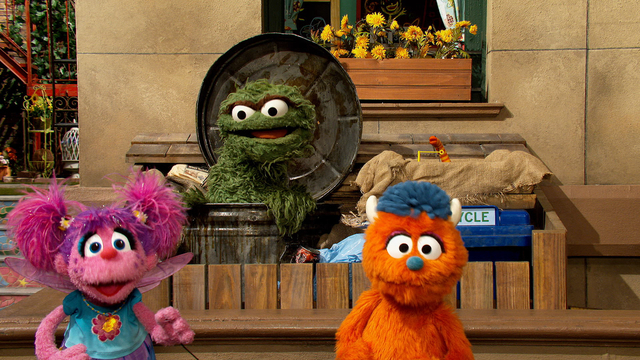
Many of us grew up hearing that watching TV “rots the brain,” but that sentiment has never applied to Sesame Street. In fact, research shows that simply watching Sesame Street helps kids learn in a variety of ways, from increasing literacy and knowledge of math concepts to school readiness and emotional learning. In some instances, the positive impact of watching Sesame Street on children matched much more costly and resource-consuming interventions for young learners.
The beloved children’s show is made by the nonprofit Sesame Workshop and launched in 1969. Sesame Street’s future was recently uncertain when the streaming service Max announced it wouldn’t renew its contract with the show last December. Netflix, however, has stepped in to save Sesame Street, with a deal that will see new episodes debuting on Netflix as well as PBS and PBS Kids.
In anticipation of the show coming to Netflix, I thought it would be a good time to examine its educational impact. To that end, I spoke with Marie-Louise Mares, a communications professor at the University of Wisconsin-Madison, and Steven Holiday, an advertising professor at the University of Alabama. Both have studied the impact of Sesame Street on children and their education and provide a closer look at the science of Sesame Street.
The Science of Sesame Street: How The Show Teaches Kids
Sesame Workshop, the nonprofit that produces Sesame Street and other shows, built educational science into Sesame Street’s DNA.
“Right from the word ‘go,’ they involved educational scientists,” Mares says. “There’s always been both formative research, where the writers and educational psychologists and so on are kind of generating scripts and plans, and are doing this kind of rapid cycle pre-testing.”
The show’s creators have also done summative research to evaluate the effectiveness of the show, and in so doing, better understand how children learn overall. That includes assessing and thinking about aspects such as the length of segments and presenting the same lesson in varied ways.
“It’s considered really effective, in part because they’re willing to tweak it and alter it based on the sort of feedback they’re getting from the kids and evaluations of the kids,” Mares says.
Using Advertising Strategies to “Sell” Kids Kids Learning
Holiday has researched how Sesame Street uses Madison Avenue sales techniques to “sell” learning to children. Sesame Street has a magazine format and features commercial-like segments that teach kids about reading or math. This is by design, Holiday says, noting that the show’s original creators knew that commercial breaks actually help sustain interest.
“They hired somebody who was from the advertising world and said, ‘Hey, make these actual commercials that are structured like commercials that are going to sell something to kids. Let’s sell them letters and numbers,’” he says.
Good educators often take this type of advertising approach naturally, and Holiday’s research found that Joan Ganz Cooney, a co-creator of Sesame Street, believed Madison Avenue sales people had actually stolen many of their best sales techniques from effective teachers.
Whatever the origins, Holiday believes using advertising strategies to educate children could be better harnessed overall, including from app developers.
The Educational Impact of Sesame Street
Watching Sesame Street has repeatedly been associated with positive outcomes in children and for such things as early school readiness.
In 2013, Mares was the lead author on a meta-analysis of 24 studies conducted with 10,000 children in 15 countries. This study found that watching Sesame Street was associated with significant positive learning outcomes, including literacy and numeracy, learning about the world, health and safety knowledge, social reasoning, and attitudes toward out-groups. Overall, Mares research suggests that children who were scoring in the 50th percentile on tests before viewing the show could be predicted to score in the 60th percentile after viewing it.
The positive gains associated with watching Sesame Street that Mares observed were similar to other interventions, including nutrition programs and pre-K classes.
“[The effect sizes] are kind of on the upper end of small by some metrics,” Mares says. “But when you compare them to other kind of attempts to intervene in cognitive learning outcomes or emotional outcomes with kids in similar countries, it’s along the lines of many of those other interventions, and those other interventions are often much more difficult to have reach and scale, because they’re often in-person, and evolve giving money, giving food, etc, having preschools, and so on.”
Other research has found similarly positive effects.
Getting The Most Out of Sesame Street and Other Educational Shows
To maximize the educational impact of watching Sesame Street, both Holiday and Mares say the best thing a parent or caretaker can do is watch the show with their child, though they acknowledge that isn’t always possible.
Even just listening in and talking about the concepts with your child later can help, Mares says. She adds that in her research with parents of young kids, they often tell her that shows such as Sesame Street or Daniel Tiger are most helpful when they reflect back on it as similar situations occur in real life.
“Daniel Tiger often has these kinds of lessons about how to handle reading or washing your hands after you’ve used the potty, or whatever it may be,” Mares says. So if a child is getting upset, a parent might ask them what Daniel does, and remind them to “take a deep breath and count to four.”
Holiday says parents should make sure to ask their kids questions about the show, ideally as they’re watching it but also later.
“The parental co-viewing and communication, where you’re there with them, and you see the content and you have them think through the content, will amplify that learning,” he says.

